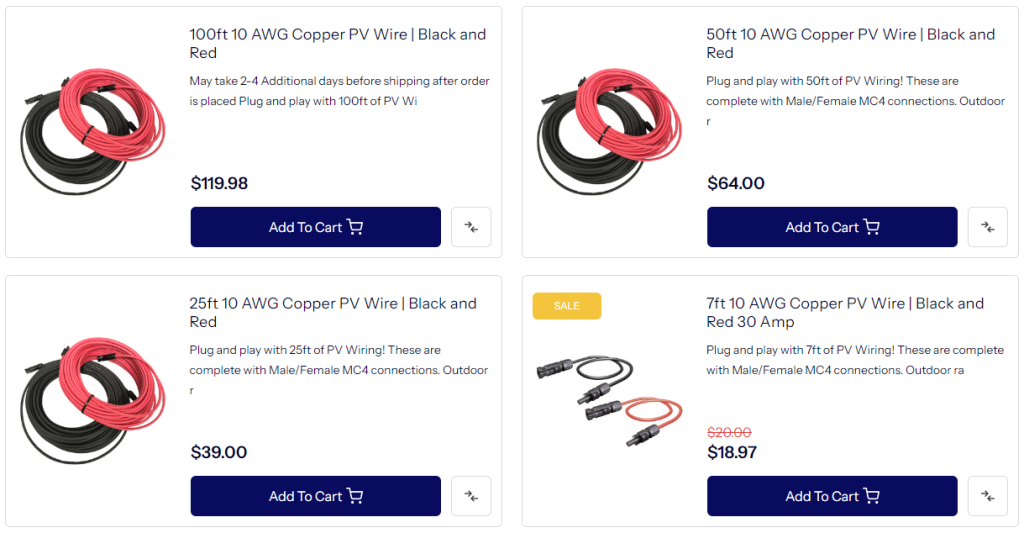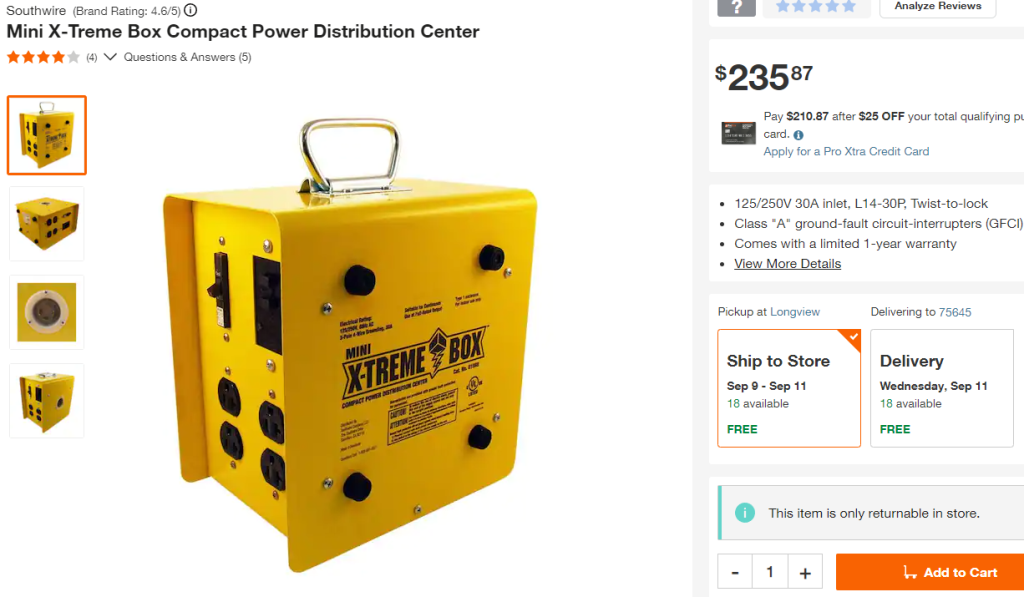What is the least I can spend to have emergency solar power and keep my food cold and lights on?
For most of us, we’ve got a limited budget and a lot of things on our minds we want to spend it on. We need to bite off what we can chew if we’re not ready to go “all-in” on solar and spend $30K to power everything and never need grid power again.
Begin with the End in Mind
There are a lot of things marketed to people who want solar backup power. However, most of those solution look like things that sit in your garage like a generator until you have a bad power day. Unfortunately, those systems cost thousands of dollars, and that’s a lot of money to have just sitting there doing nothing.
My philosophy is to map a plan toward a whole-house solution and invest in the first chunk you need to get something useful. Then, as resources allow, add more of the pieces.
Step 1 is to be able to use the sun to power essential things like refrigerators.
You’re looking at about $4,000 to do that right. Bear in mind that silent power that doesn’t require trips to the gas station.
In the video below, the guy lays some solar panels on a trailer. Then he plugs them into an inverter. Next he wires a basic outlet strip (not recommended) into the AC out on the inverter and starts running saws, etc.
With a little better solution for the power distribution, it’s possible to set all this up and have emergency solar power for a couple thousand dollars.
NOTE: Solar power varies a lot on cloudy days. If you’re running straight solar, there’s no battery to buffer the load. Don’t be greedy on cloudy day and try to run everything because power output might drop below what your devices need. The system will just stop putting out power and the devices will shut off…but that might be hard on some equipment.

Inverter
I’m a big fan of the EG4 6000XP because it packs a lot of value into a box for $1,399.
- Up to 8,000W of Solar Power (PV) in.
- Up to 6,000W of AC power our (3,000W x 2 120V legs)

Solar Panels
The EG4 can handle up to 8,000 watts of input, but you can plug just about any array of 2,000W or more into it. Bear in mind if a panel is rated at 400W, you won’t get all 400W. Those ratings are laboratory conditions. Ironically, they will be more efficient in the winter when they are cold vs cooking in the Texas heat with a UV index of 12.
Signature Solar in Sulfur Springs is a great source for solar panels. Panels are often damaged in shipping, so it’s nice to be able to drive there and pick them up. …then the only idiot you can blame for breaking one is yourself…ask me how I know.
They sell panels by the pallet for a little savings, so it’s good if you can plunk down $5,000 for 30-32 400+ watt panels all at once. That will also make your life a little simpler later when building out your system.
However, we’re talking minimum here. I think it would be best to be able to comfortably crank out 2,000 watts for 7-8 hours per day. That will take at least 3,000W of panels and 4,000W would be better to help you out on cloudy days.
Panels cost about $0.45 per watt.
In the example below: 9 x 415W panels (3,735w) @ $187.20 = $1,684.80

PV Cables
You’ll need a way to get power from your panels to your inverter. Signature Solar is a good source for that too. The 6000XP inverters have two inputs with a maximum of 4,000w each. We have 9 x 415W panels listed above because putting 10 on would technically put us over the limit. The odds of 10 panels generating more than 4,000w is slim, but it’s possible. Also, these panels are “bi-facial” meaning if you have them above a reflective surface, they can pick up some juice on the back side too.
They can handle 480V of input. Each of the panels in the example above has a volage of 37.42V. When panels are wired in series the voltages add together. 9 x 37.42 = 336.78V which is well under the 480V limit. That means you can buy one 100′ set of PV wires and hook all your panels together and feed into your inverter.
Personally, I would buy a 7′ set too. You’ll cut one end of this set off and wire into the inverter. Then use the factory MC4 plug to click together with the 100′ run out to your panels. This way you can also disconnect the wires later.
- $119.98 for 100′ pair
- $18.97 for 7′ pair

Where do we stand so far?
The next section of what you do with the power has a lot of variations, so I’ll sub-total this up here and leave the rest up to you. You should be able to cover all the remaining AC wiring for about $500.
$1,399.00 [1] 6000XP Inverter
$1,684.80 [9] 415W Solar Panels
$119.98 for 100′ pair PV wire
$18.97 for 7′ pair PV wire
SAVE $50 using one of the promo codes I’ve included in the site.
$3,172.75 Subtotal
$261.75 Tax
$20.00 Shipping – gas for a trip to Sulfur Springs
$3,454.50 Total
Power Distribution
Remember, we’re discussing emergency power. This setup is intended to take the place of a generator. You need to have something that take the AC power from the inverter and terminates in some outlets so you can plug into them and run cords to power your essentials.
One option is an RV outlet box. For example, you could mount the inverter on your garage wall (on some non-combustible cement board). Then run your AC power out to an RV outlet box.
When you need power, you could lay your panels out on the driveway, connect your PV cables to your inverter and your RV outlet box would have power.
You could also mount a small electrical panel and run power to that then have a few circuits going out of that to some outlet boxes. As long as you don’t set up some janky fire hazard, you can be creative providing outlets for the things you need then run extension cords to your fridge, freezer, etc.
If it was me, I’d run power out to a few breakers in a small panel.
- (3) 20A 120V > to outlets mounted below the box.
- (1) 30A 120V > to a generator-out receptacle.

Then I would buy a good 30-AMP RV cord that’s long enough to reach into my kitchen so I have 1 heavy duty power cord running into the house.

Then I’d buy a quality job-site power distribution box that has a bunch of outlets I can tap into to run multiple things. Maybe something like this, so I can run the fridge, a room AC unit, charge every device and battery, etc.

